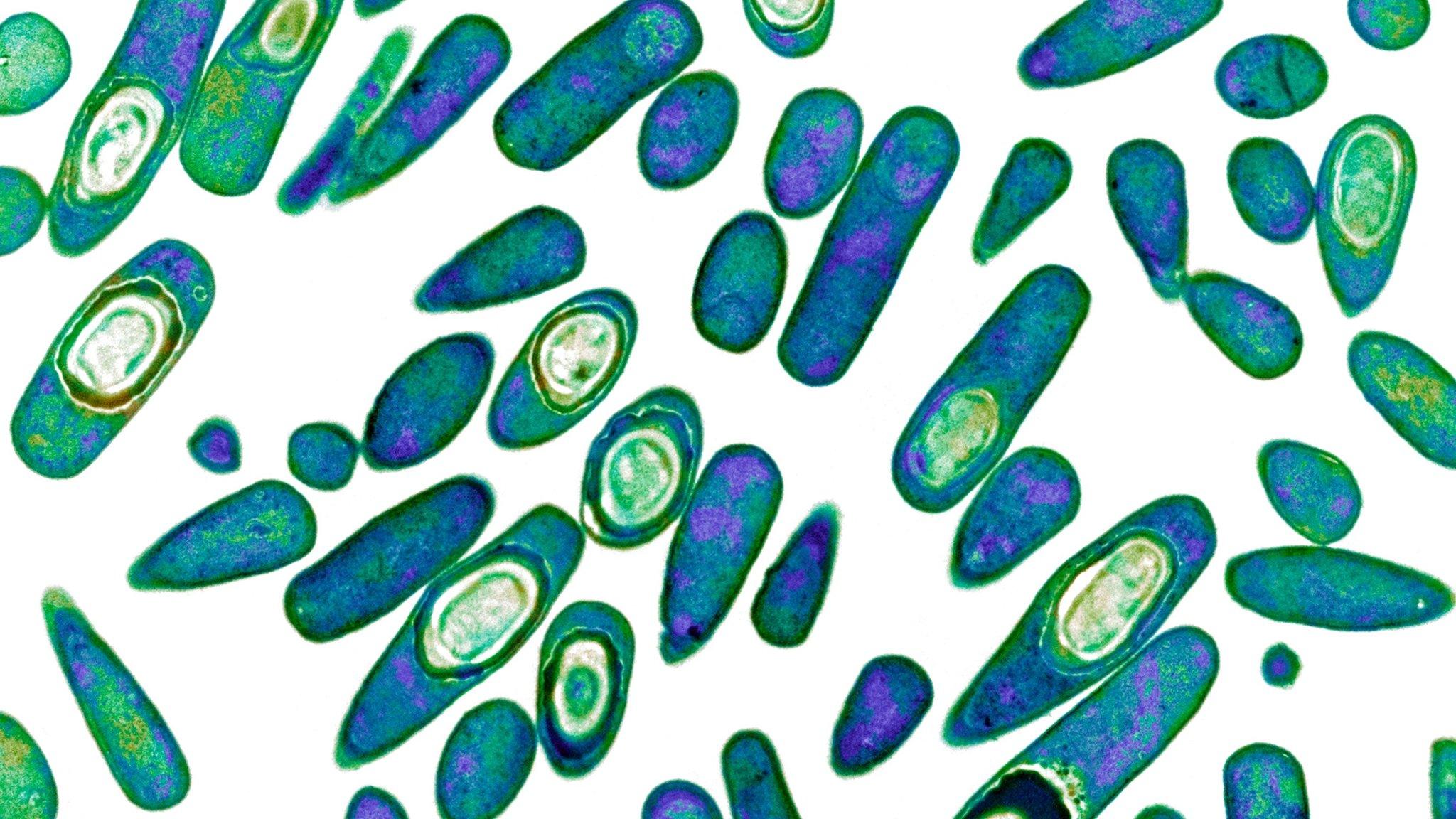Antibiotics 'seen using brute force to kill bugs'
- Published

Scientists say they have witnessed antibiotics using brute, mechanical force to rip apart and kill hard-to-treat bugs.
Researchers suggest these aggressive tactics - seen for the first time - could be used to build more effective antibiotics in the future.
And this could help tackle the problem of antibiotic resistance, experts say.
The early, laboratory-based study is published in the journal Nature, Scientific Reports., external
'Global threat'
A team of researchers, including scientists from University College London, built tiny equipment, smaller than a single human hair, to measure any changes in mechanical forces when antibiotics were unleashed on bugs.
They studied four different antibiotics and found the most effective ones were able to exert higher forces on the bacteria than less effective ones, "tearing holes" in the bugs.
One antibiotic, Oritavancin, which is a modified version of the already well-known drug Vancomycin, was particularly good at employing this tactic.
Researcher Dr Jospeh Ndieyira, from University College London, added: "No-one has really thought about antibiotics using mechanical forces to kill their targets before.
"And these forces seem very important when it comes to how effective a drug is.
"This will help us create a new generation of antibiotics to tackle multi-drug resistant bacterial infections, now recognised as one of the greatest global threats in modern healthcare."
Meanwhile Dr Paul Hoskisson, from University of Strathclyde, said the research showed that there was still a lot to learn about the basic science of antibiotics and without this knowledge it would difficult to design better drugs.
He added: "The paper also suggests that even by modifying known antibiotics ever so slightly, we could add extra punch to the drugs we already have."
- Published19 November 2015

- Published19 May 2016

- Published4 November 2016
